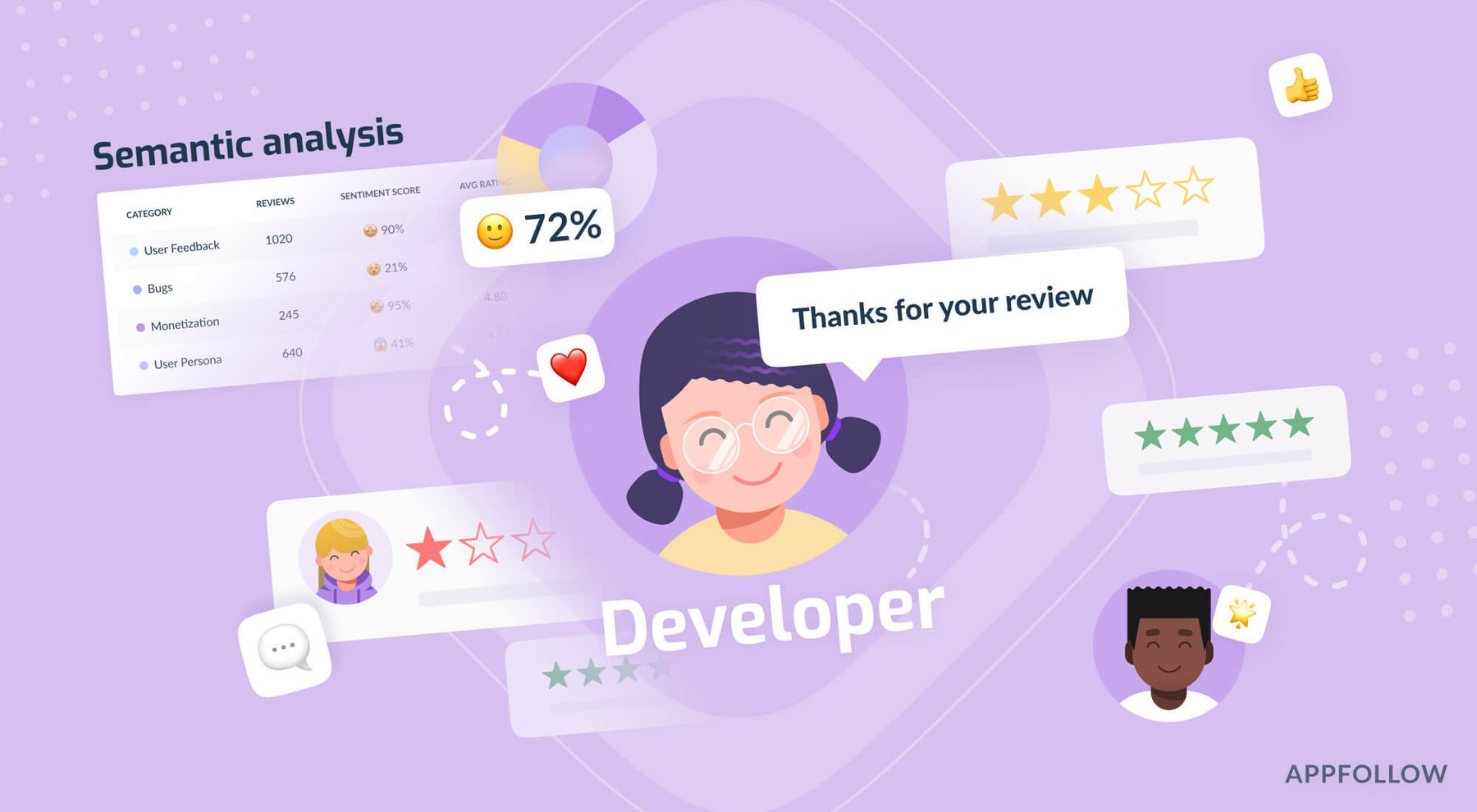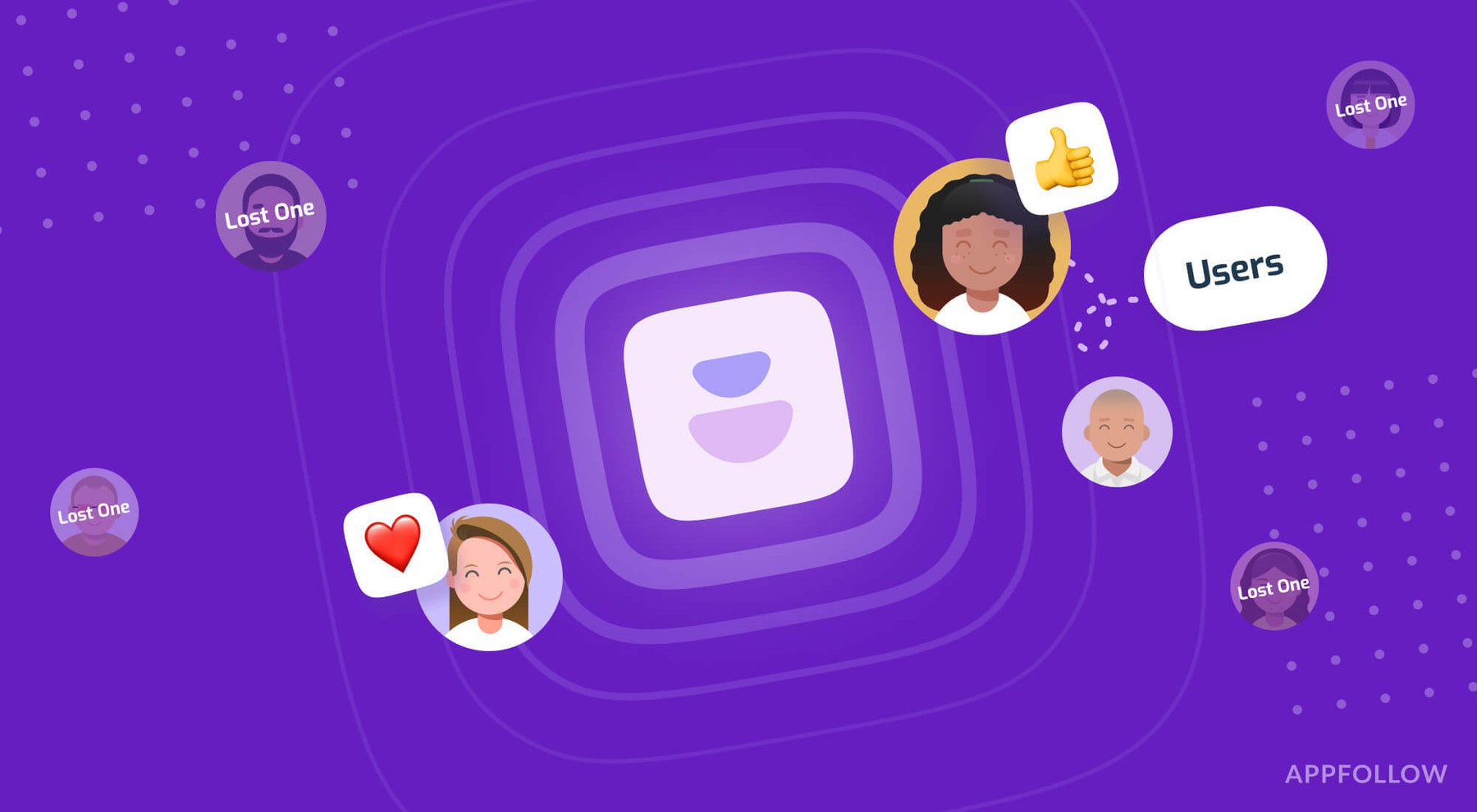Voice of the Customer (VOC) for Mobile Apps

Table of Content:
In a world of opinions and noise, a business and its strategy must stay focused on what matters — meeting the needs of their users. This is especially the case in the mobile app market. App store trends & changes in user expectations happen in what feels like the blink of an eye. What's more, the speed of release for updates and new features is unparalleled to any other type of product.
To ensure users remain happy and you build a product roadmap that meets users' needs, you need to listen to what they're saying about their experiences with your app. An easy way to do this is by implementing Voice of the Customer analysis. Here's how...
What is Voice of Customer (VoC)?
Voice of Customer (VoC) is not so much a tool as a process — listening and learning from your most precious asset: your active users. It is done by collecting and analyzing feedback to understand what your users need from your app to be satisfied, as well as what they like and dislike about it.
As it’s crucial to know what you need to do to retain your users over the long term, VoC is a vital process for feature development. It should be your main driver for any future product decisions, the fuel for your product roadmap. VoC is the only thing that'll accurately show what features or updates meet your users’ pain points. Customer Support needs it too in order to better understand those they spend their time helping. Thus, Voice of Customer helps businesses to improve user retention and strengthens users’ connection to the brand.
Why is voice of customer important?
The outcome of this analysis should fuel an excellent customer experience — which is now viewed as equally important, if not more so, than product or price for users. But you won’t be able to provide this great customer experience if you aren’t listening to your users’ needs.
By using the right tools and strategies to obtain the voices of your customers, you can provide an excellent CX throughout the customer journey by successfully meeting your users' needs at every point in their journey using your app.
Common topics uncovered through voice of customer
Voice of Customer is the manifestation of user needs. In regards to mobile apps, these needs are commonly linked to:
- App Performance: users expect your app to always run smoothly, and allow them to easily navigate across your features seamlessly. Users who uninstall an app do so for four main reasons: rough UX, slow load time, crashes or bugs, unfriendly design.
- App Pricing: the cost of using your app, or buying from it, has to compete with others in the market, and seem fair with the value a user gets from using it.
- Value Provided: users want to use an app that offers a unique or personalized experience, keeping them engaged, and continuously provided with fresh new content. The app needs to make them feel like they couldn’t - or don't want to - do without it.
- Customer Experience (CX): users seek simplicity & an intuitive experience when it comes to mobile apps. They want to be able to do what they want to do in the easiest way possible. If they have an issue, they expect to receive sufficient help promptly through their chosen channel.
Voice of Customer analysis can be used to find out how well a business is meeting these needs.
Voice of customer examples
It can cost 5x as much to acquire a new app user than it does to keep a current one. This is why tapping into VoC is so important — it tells you what you have to do to keep your users engaged enough to continue spending time and money in your app. You can utilize VoC to develop relationships with your customers and improve user loyalty. To do this successfully for your mobile app, you must execute VoC through a variety of channels and methods:
User reviews on the app stores
This is feedback from your users provided specifically about your app in their own words. It’s your richest source for VoC and can be used to really better understand how your users are experiencing your app throughout their time as a customer. Both positive and negative reviews are important to include in your VoC analysis.
CSAT & NPS for app users
CSAT is a measurement for your users’ experience in your app. It is a score for how well your app meets user expectations. You can collect this type of user feedback through various channels, including email, in-app surveys, SMS, and track it on AppFollow.
NPS, or Net Promoter Score, is slightly different but just as useful. It’s a good reflection of customer loyalty and is a single question on a scale of one to ten. It asks how likely a customer would recommend your app to a friend or family member.
Social listening across social media channels
A great place to discover golden nuggets of feedback is on social media. You’re not only able to follow discussions about your app but you can also open direct communication with users who post their opinion. The best way to keep your finger on the pulse of relevant conversations on channels such as Twitter, Quora, Facebook, and LinkedIn is through social listening — staying up to date with the latest mentions of your app and collecting this as feedback.
Customer interviews with your target personas
This is an old school way to collect VoC. It’s costly, time consuming, and not always easy to organize. Interviews are usually performed over the phone, via a video chat, or in person. If you can afford to do them, customer interviews are good in that they build trust with your users, who will feel more valued through this personal approach.
Conversations with customer support agents
The most knowledgeable people about your users are those that deal with them on a daily basis — your customer support team. They will have the best idea about what your users are thinking at any point in time. Having regular conversations with them and collecting data from their systems will be a good source of information for your VoC analysis.
The voice of customer process
Decide what you want to learn about your users
An initial goal in regards to what you want to find out from a VoC analysis. You have to know what you’re looking for — are you trying to find out how users feel about a recent update? Or, is there a need to figure out the reasons for a sudden uptick in your churn rate? This overarching goal will help you find what you need quicker.
Find the right tools to help you analyze user feedback
A tool that does this well for mobile apps is Semantic analysis — it collects and categorizes feedback from user reviews to help you uncover the Voice of the Customer. For example, using semantic analysis will enable you to instantly find all the reviews that mention your recent update and see how happy, or unhappy, users were with it.
Ensure your teams are collaborating across the feedback loop
Your teams across the business need to be collaborating to get the most out of VoC. For example, your support team needs to keep a finger on the pulse on user reviews to look for patterns in feedback and user sentiment. They then need to send any feedback that relates to performance or features to the product team. The product team needs to listen to this feedback and implement it into the roadmap. If more information about what the customers need is required, the product team needs to go back to support with a request that they search for these particular insights.
Voice of customer best practices

Voice of Customer questions
So you know what you want to find out from VoC. But how do you visualize this? The best technique is to set out your queries as questions for your customers, such as:
1. What were you looking for when you found our app?
What it was that your customer was looking for, or trying to solve when they discovered your app. This can help you understand your customer pain points and use cases to improve marketing and build new features that are relevant to those things.
2. What were you looking for when searching for a new app?
This is to find out what your users expect from your app. What matters to them will be deal breakers and determine whether they install and don’t churn. This could be anything from ease of use to helpful customer support.
3. Describe our app in a sentence
This gives you an idea of what instinctively comes to your users’ minds when they think of your brand and app. A sentence means they have to sum it up briefly so it will be easy to know what they think exactly. This would be a question you want to be answered after recovering from a slew of bad responses to a new feature in reviews, for example.
4. Would you recommend our app to someone you know?
This is the NPS question and allows you to evaluate the loyalty & enthusiasm of your users. If a user is willing to recommend your app to someone they know, it means you’re doing enough for them to feel like the experience is worth sharing.
5. What do you think of X (feature)?
This is important for mobile apps. As you constantly iterate and add to your app’s offering, you will want to know if these new additions are satisfying your users. If there’s a negative sentiment towards this feature or update, then it’s time to think about tweaking it or removing it altogether.
6. Has X improved your experience?
This is a continuation of the previous question but is more focused on the experience that this new feature or update provides rather than a general opinion of it.
7. Are you running into performance issues during your time on our app?
To find out if bugs, crashes, slow load time, or bad UX are affecting the experience of your users. By keeping this question in mind, you will be switched on to any of these issues, ensuring your app is performing its best.
8. How do we make the customer experience better for you?
This is really to analyze the customer lifecycle — it’ll help you find out if you're making it easy enough for a user to make a purchase or subscribe to your app. It’ll also allow you to see the effectiveness of your app’s customer support.
9. Are you considering using one of our competitors? If yes, which one?
This question allows you to focus on finding feedback that mentions competitors, which is important for when you perform competitive analysis. The other thing that it does is help you find out what is making a user consider switching and what that competitor is doing that’s tempting them which your app is currently missing.
Voice of Customer with AppFollow
You can use our Semantic analysis tool, which uses the latest in AI to automatically analyze and categorize thousands of customer voices in app store reviews for you. Get the latest feedback about bugs, feature requests, monetization, reactions about new releases, UX complaints, and feature favourites. This will enable you to build an app users love and achieve high rankings on the app stores and sustainable growth.








